B-24 Liberator Instruments and related Items.
Pictured Left to Right from rear are: B-24 Reflector Gunsight, a standard-issue HS 33 Headset, and a K13 Waist Gun Mount Base Plate used to secure a 50 calibre heavy machine gun.
In the middle row are three instruments as fitted to the Liberator; a Radio Compass Bearing Indicator to the left, an Oxygen Blinker Gauge which indicated the flow of Oxygen whilst the aircraft was at altitude. Continuous blinking of the white shutters in the centre indicated all was well. Finally, an altimeter which the crew would adjust to reflect the local barometric conditions; a vital piece of safety equipment.
In the foreground is the all-important 'Load Adjuster' which the crew would use to calculate Weight and Balance of the Aircraft. A badly balanced B-24 would be all but impossible to fly.
Uniform and associated memorabilia from the estate of S/Sgt. William Vogel
Nose Turret Gunner
Lt. Francis X. Markovic Crew
732nd Bomb Squadron.
Pictured Left is Bill Vogel's cut-down, four pocket tunic, crew photo, enlisted man's 'crusher' cap and Air Medal.
On the Right Hand Sleeve can be seen the Armourer's Specialist Patch, with distinctive blue background. On the Left Hand Sleeve, his overseas bars are shown, being the two short yellow patches which denotes that he had performed 12 months overseas service. Below this is the Service Stripe or 'hash mark' which was awarded to him on completion of three years' service.
Above his left breast pocket are the Sterling Silver Gunner's Wings and below those are his medal ribbons which comprise of (L-R as viewed) Air Medal, Meritorious Service Medal and the European–African–Middle Eastern Campaign Medal.
The Crew Photo shows Pilot: Lt. Francis X. Markovic Jnr., Co-Pilot: Lt. Rodman, Navigator: Lt. Hanson, Bombardier Lt. Lundquist, Engineer T\Sgt. Arthur J. Berger, Radio Operator: S\Sgt. Andy Seech, Nose Gunner: Sgt. William Vogel, Top Turret Gunner: Sgt. Charles Trautwein, Waist Gunner: Sgt. David Rhodes, Tail Gunner: S\Sgt. Walter Spuhler.
The crew completed 30 missions and they returned to the United States where S\Sgt. Vogel then took part in a War Plant Tour in Niagara in order to help the war effort in which his crew was still engaged. A War Plant Tour was designed to raise both awareness and funds for the War Bond effort which was vital in securing victory.

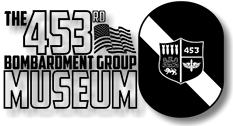
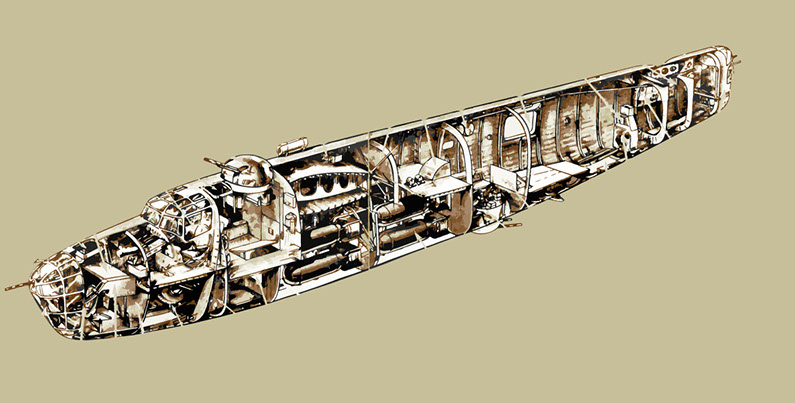
Hover your mouse over the B-24's nose for a second; something is bound to happen.
NEW: Our latest addition, the 8th Air Force Heritage Gallery.

Example of the typical Bomber Crew attire as worn over Europe 1943 - 1944.
The Flying Jacket pictured is an example of the type B3 made of untreated sheep hide, dyed and lacquered. This example is made by the Bronco Leather Company and is known as a 'Redskin' because of the colour of the dye. This was a vital piece of clothing worn in conjunction with an electrically-heated flying suit to combat the extreme low temperatures encountered at altitude which could be as low as -60 degrees.
It is shown being worn with a Type B3 Life Vest which was inflated by two CO2 cylinders which were activated by pulling on a cord, both of which can be seen at the base of the Life Vest, commonly known as Mae West's after the popular singer of the period. This was a mandatory piece of flying equipment for Air Crews operating over Europe as the North Sea was always crossed at the start and end of each mission.
The display is topped off with an enlisted man's 'crusher cap' .
When the 453rd Bomb Group started operations in February of 1944 this type of flying equipment was being phased out in favour of the Cotton Poplin Alpaca-lined flying clothing. This offered greater thermal protection at high altitude as leather flight equipment tended to soak up moisture; leading to frostbite.
More exhibits and displays from the Collection will be added in due course.
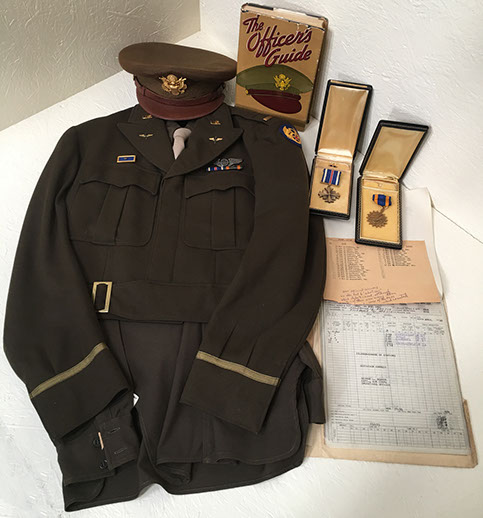
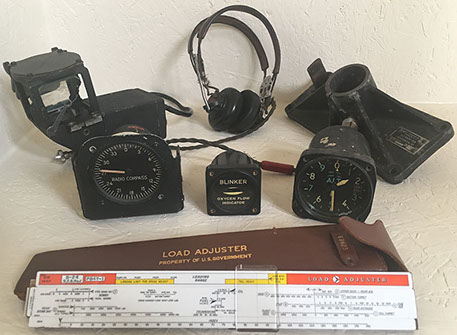
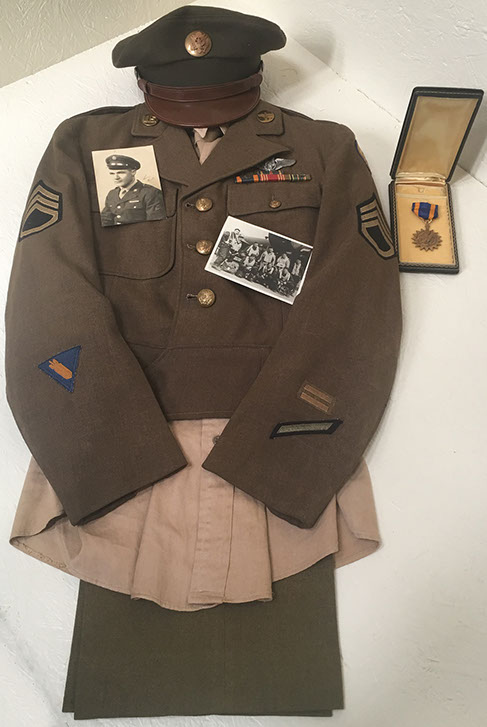
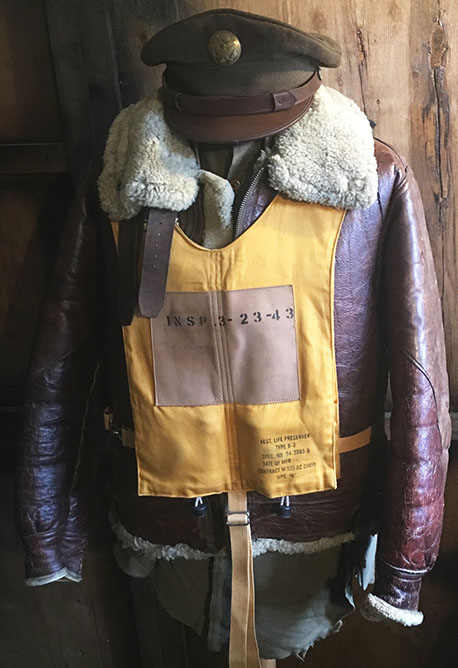
Uniform and associated memorabilia from the
estate of Lt. Louis Stern.
Louis Stern was the Navigator on Lt. Victor Moretenson's crew. Louis flew 26 missions from the 30th November 1944 to the 10th April 1945 as a member of the 732nd Bomb Squadron.
Later he was transferred with his crew to the 93rd Bomb Group at nearby Hardwick. He was awarded the D.F.C. and Air Medal.
His crew were; Pilot: Lt. Victor A. Moretenson, Co-Pilot: Lt. Lloyd W. Prang, Navigator: Lt. Louis Stern, Engineer: T\Sgt. John E. McSherry Jr., Radio Operator: T\Sgt. William L. Jones, Nose Gunner: S\Sgt. Frank P. Russo, Top Turret Gunner: S\Sgt. Melvin W. Baldus, Waste Gunner: S\Sgt. Paul F. Pfenninger, Tail Gunner: S\Sgt. Howard P. Shaw.
Pictured left: Louis' English-made Ike Jacket, tailored at Bond St., London. His cased D.F.C. and Air Medal, along with his 201 File, which details his missions. Along with these is the standard Officer's Guide which was used to instruct Officers in military etiquette and regulations.
Finally, his 50 mission 'crusher'cap. The crusher cap is so called as, by regulation, Air Crew were permitted to remove the 'stiffener grommet' from the cap so as to allow for a closer and more comfortable fit of the radio headset.
© Buckenham Aviation Centre Ltd. Website aviare.co















